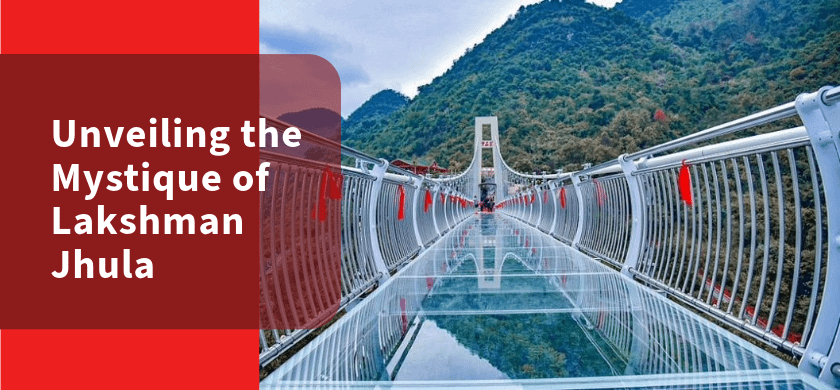In this comprehensive article, we delve deep into the enchanting world of Lakshman Jhula, an iconic suspension bridge that stands tall amidst the serene landscapes of Rishikesh, India. Our exploration takes us through the historical significance, architectural marvel, and spiritual resonance of this remarkable structure.
Lakshman Jhula: A Glimpse into History
The Legends and Lore
Lakshman Jhula finds its roots in the ancient Indian epic, the Ramayana. Legend has it that this very spot is where Lord Rama’s brother, Lakshman, is said to have crossed the sacred river Ganges on a jute rope. To commemorate this mythical event, the bridge was constructed, earning the name ‘Lakshman Jhula.’ The bridge has since evolved into an integral part of Hindu mythology, drawing pilgrims and tourists alike.
A Walk Through Time
Built in 1929, Lakshman Jhula stands as a testament to architectural finesse. It was initially a suspension bridge made of jute ropes and was later reconstructed using stronger materials, including iron. The bridge connects the two villages of Tapovan and Jonk and spans 450 feet across the Ganges River. Its historical significance and mesmerizing views have made it a timeless attraction.
The Architecture of Lakshman Jhula
Engineering Marvel
Lakshman Jhula is a paragon of architectural ingenuity. Its suspension design, with two massive towers on either side, supports the weight of pedestrians and vehicles with remarkable stability. The bridge offers a unique vantage point to witness the breathtaking beauty of the Ganges and the surrounding Himalayan foothills.
Aesthetic Charm
The bridge’s ornate ironwork and intricate design details make it a visual delight. The delicate filigree work on the railings and the grand entrance arch adds to its aesthetic appeal. The bridge exudes an aura of timeless elegance, seamlessly blending with the natural beauty that surrounds it.
Lakshman Jhula: A Spiritual Oasis
Pilgrimage Destination
Lakshman Jhula has evolved into a significant pilgrimage destination. Pilgrims visit the bridge to seek blessings and perform rituals in the serene ambience of the Ganges. It is believed that taking a dip in the holy river beneath the bridge cleanses one of the sins, making it a sacred site for Hindus.
Yoga Capital of the World
Rishikesh, the town that houses Lakshman Jhula, is renowned as the ‘Yoga Capital of the World.’ The bridge is a gateway to numerous yoga ashrams and spiritual retreats. Practitioners from across the globe flock to this spiritual haven, seeking enlightenment and inner peace.
Visiting Lakshman Jhula
If you plan to visit Lakshman Jhula, consider the following:
- Best Time to Visit: The ideal time to explore this marvel is during the pleasant months of September to April.
- Local Cuisine: Relish the authentic flavours of North Indian cuisine at the local eateries nearby.
- Yoga and Meditation: Engage in yoga and meditation sessions at the renowned ashrams nearby.
In conclusion, Lakshman Jhula stands not only as a physical bridge but as a bridge between history, spirituality, and architectural brilliance. Its magnetic charm draws travellers from all corners of the globe, leaving them awe-inspired by its rich heritage and captivating beauty. Whether you seek spiritual solace or simply wish to admire its architectural grandeur, Lakshman Jhula promises an unforgettable experience, firmly establishing its place as an iconic landmark in the heart of Rishikesh, India.

